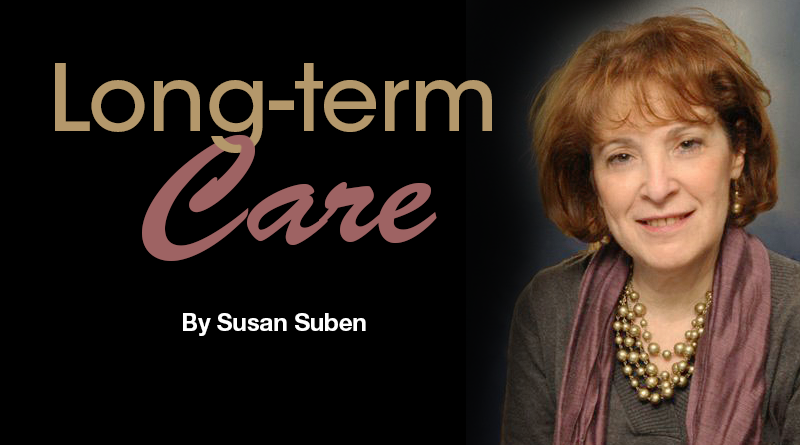Mom & Dad Can No Longer Live At Home…
By Susan Suben
This is a common scenario. You last saw your mom and dad over a year ago. They were in good spirits, eating well, socializing and maintaining their household. During your most recent visit, they both looked like they had lost weight, the blinds were drawn, dirty dishes were in the sink, molding food was in the refrigerator and that aura of cheerfulness was replaced by a sense of gloom.
Trying to get them to open up and have “the conversation” was difficult. But after expressing your concerns about their health and safety, you managed to find out that the house was too big for them to manage, dad had fallen several times, some of their closest friends were ill, and the aging process was finally getting to them. As Bette Davis once said, “Getting old is not for sissies.”
What do you do? While ideally you would like to try to keep them at home for as long as possible with support services, moving them into a senior living community that can help with their daily needs, keep them engaged and provide supervision may be the healthier choice.
The process of placing your parents in a senior housing community is not as difficult as you may think. The key is to keep your parents involved and allay their fears. Set up appointments to tour places together, discuss their finances and what they can afford and, most importantly, fortify the notion that they will still be in charge of their lives and remain independent only it will be easier and hopefully more fun.
There are many different communities to investigate depending upon the level of care needed and affordability. In NYS, there are adult homes, family-type homes, assisted living facilities, enhanced assisted living facilities and memory care communities.
Most of these settings will only accept private pay or reimbursement from a long-term care insurance policy. Very few will accept Medicaid so it is important to discuss with the facility what happens when private funds run out. It could be worthwhile to look into veteran’s benefits as a supplement to their payment source.
Each year, the Onondaga County Office for Aging in Syracuse publishes a resource guide that simply defines each type of setting. Below are excerpts from their guidebook that may help you determine the best housing option for your loved one.
• Adult home. It offers long-term, supportive care in a private or semi-private room. All meals, housekeeping, laundry, medication administration, personal care, case management and activity programs are included.
• A family type home for adults. It is usually provided in a private home with a maximum of four residents. The home must be certified by the NYS Office of Children and Family Services. It may provide a cozier atmosphere but certain services can be limited.
• Assisted living facilities. They are generally for individuals who historically would have been placed in a nursing home even though their needs are more social than medical. The atmosphere can be quite elaborate with communal rooms, libraries, activity rooms, outdoor gardens, etc. Residents can select a studio, one or two bedroom apartment. Couples can live together and pets are sometimes allowed. Usually, there is a small kitchenette but the facility provides all meals, supervision, personal care, case management and home health services. An individual must be able to transfer on their own or in a wheelchair.
• Enhanced assisted living facilities. They offer the same services as an assisted living facility but are allowed to do “oxygen therapy, blood pressure checks, catheter care, nebulizer treatment, fall management, one and/or two person transfers, insulin administration, blood glucose monitoring, and insulin administration”.
• Memory care communities. They provide care to individuals who have Alzheimer’s or other forms of dementia. Staff is specifically trained to work with this type of population so that residents remain engaged with their surroundings. The community is especially designed to “cue its residents in their daily lives and reduce problematic patterns.” Personal care, laundry, mealtime assistance and medication monitoring are included. An alarm system is active throughout the facility.
Again, the key to making the proper placement is to know your parents needs and financial capabilities. Consider working with a care coordinator or geriatric case manager who can help you select the best residential communities to visit with your parents. Your goal is to offer guidance to your parents so that they can make wise choices about their future just as they guided you when you were growing up.
Susan Suben, a certified senior adviser, is president of Long Term Care Associates, Inc. and Elder Care Planning. She is a consultant for Canandaigua National Bank & Trust Company and can be reached at 800-422-2655 or by email at susansuben@31greenbush.com.

